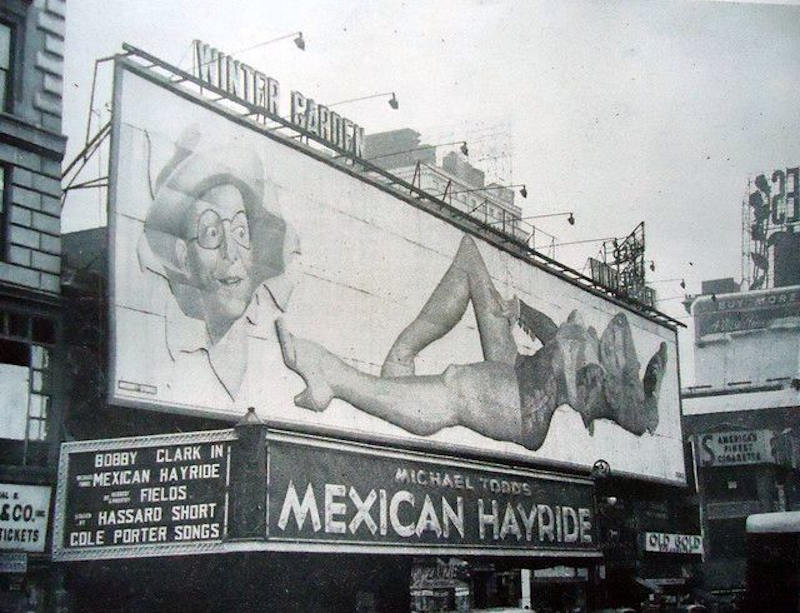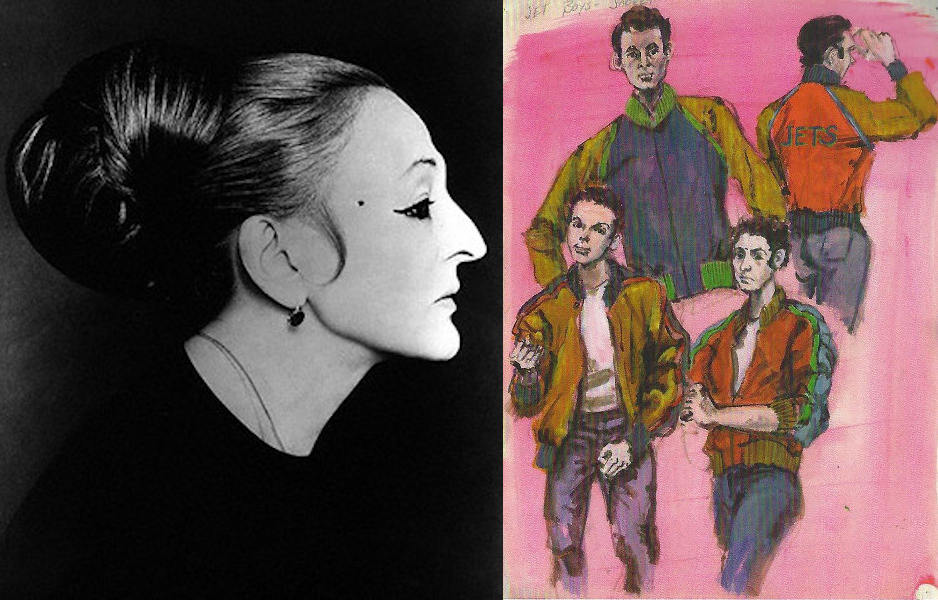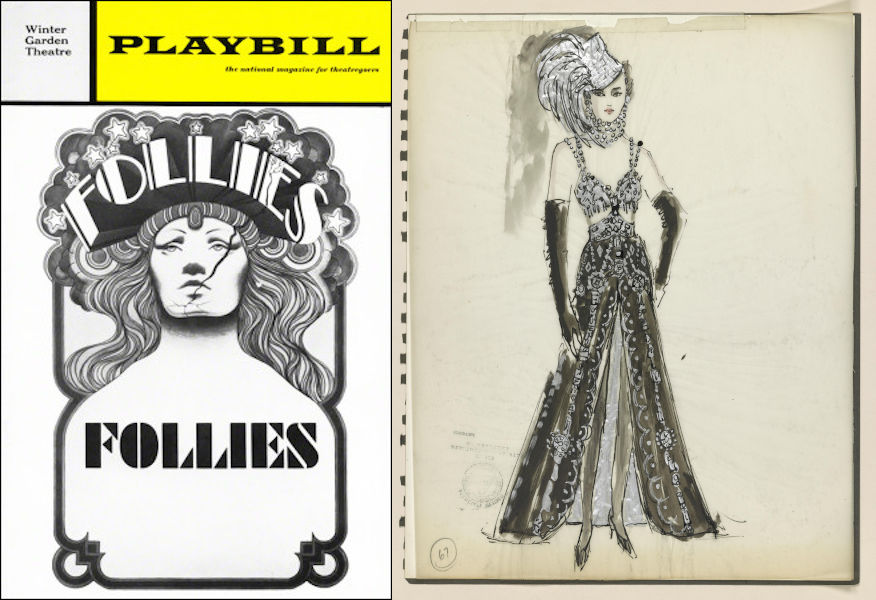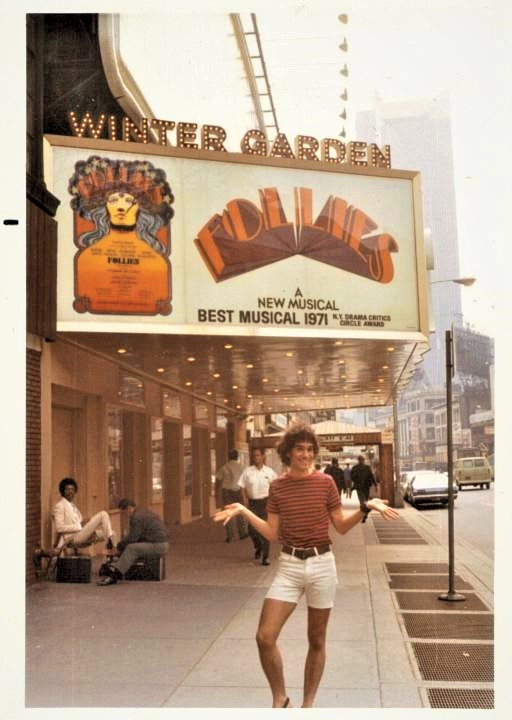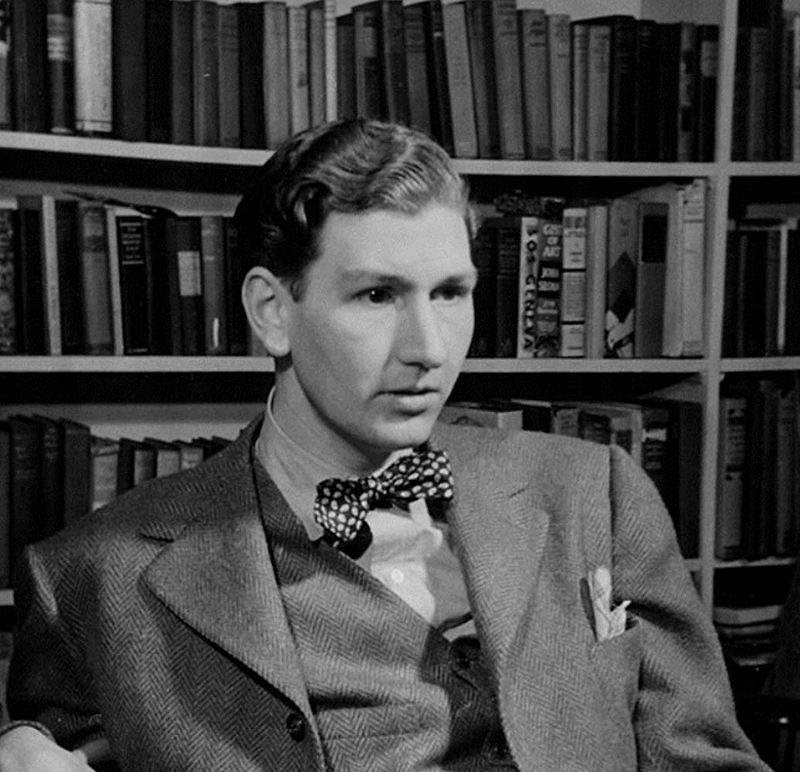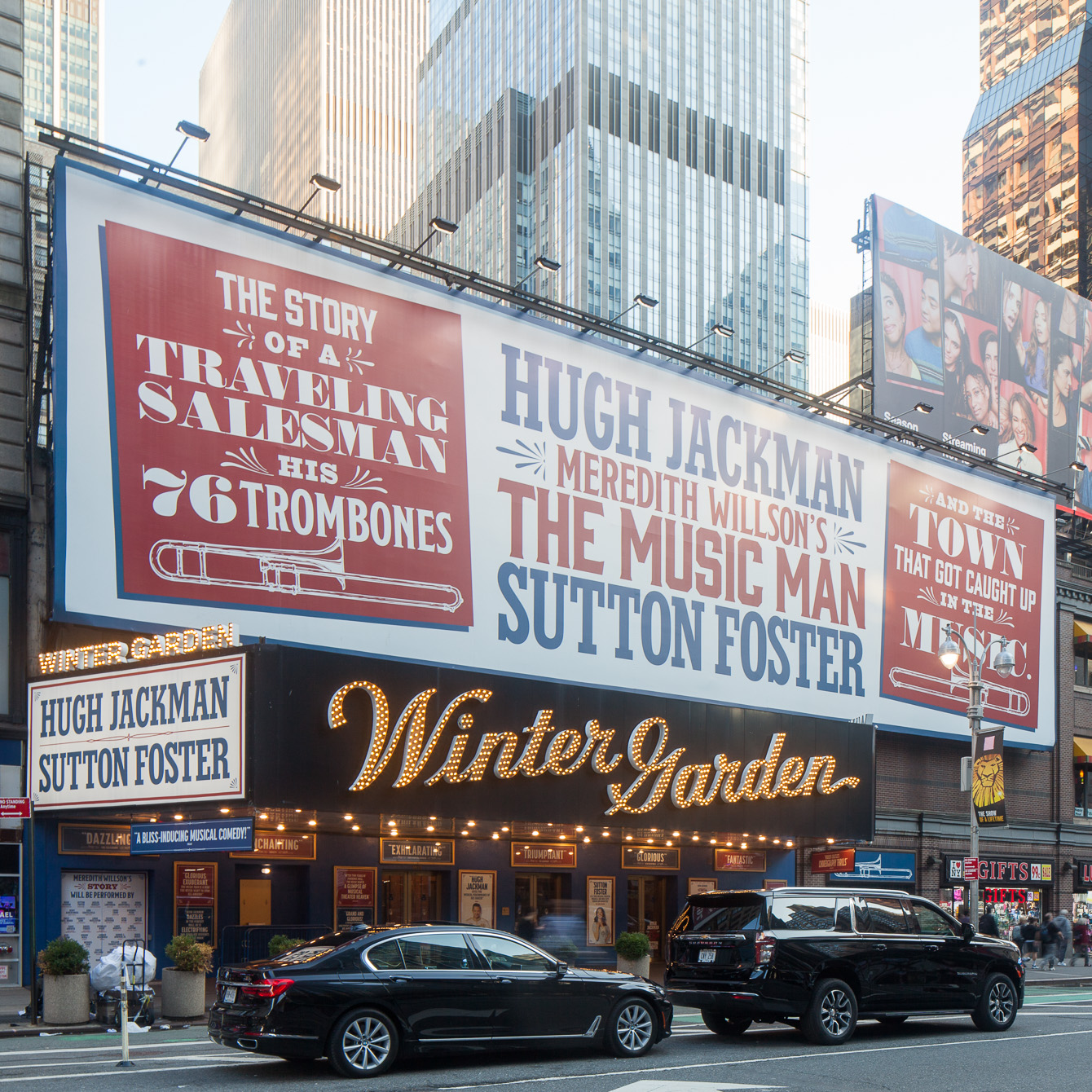
Winter Garden Theater
overview
Opened in 1911, the Winter Garden Theater has staged multiple productions involving major LGBT performers and creators, including Vincente Minnelli, who, according to biographer Emanuel Levy, was openly gay while in New York, before moving to Hollywood and becoming more closeted.
Perhaps the most famous musical to play at the Winter Garden was West Side Story, which premiered here in 1957 and featured a creative team in which all of the major members were gay, lesbian, or bisexual.
History
From the time of its conversion in 1910-11 from a stable into an enormous theater for musical revues, as well as its interior remodeling in 1922-23, the Winter Garden Theater has hosted an especially large number of productions that are indicative of the contributions made by the LGBT community to American musical theater.
An early hit with LGBT associations was Artists and Models (1925-26), with costume design by Erte and George Barbier, and with actor Jay Brennan. Starting in the early 1940s, the Winter Garden produced a significant amount of hits, almost all of them musicals, with many of the most important LGBT artists on Broadway:
- Sons o’ Fun (1941-43), with scenic and costume design by Raoul Pene du Bois
- Ziegfeld Follies of 1943 (1943-44), with costume design by Miles White, and with actor Jack Cole
- Mexican Hayride (1944), with music and lyrics by Cole Porter
- As the Girls Go (1948-49), choreographed by Hermes Pan
- Wonderful Town (1953-54), with music by Leonard Bernstein (Best Musical Tony Award), scenic and costume design by Raoul Pene Du Bois (Best Scenic Design Tony Award), and with actor Cris Alexander
- Plain and Fancy (1955, opened at the Mark Hellinger Theater), with scenic and costume design by Raoul Pene Du Bois
- Bus Stop (1956, opened at the Music Box Theater) by William Inge
- West Side Story (1957-59 and 1960), perhaps the most famous of the Winter Garden’s musicals, and in which all of the major members of the creative team were gay, lesbian, or bisexual: Jerome Robbins, who directed and choreographed the show with Peter Gennaro (Best Choreography Tony Award); Leonard Bernstein, who wrote the music; Arthur Laurents, the librettist; Stephen Sondheim, the lyricist; Oliver Smith, the scenic designer (Best Scenic Design Tony Award); Irene Sharaff, the costume designer; and Jean Rosenthal, the lighting designer; the production also included actors Larry Kert, who was the male lead, Grover Dale and Tommy Abbott
- The Unsinkable Molly Brown (1960-62), with scenic design by Oliver Smith, and costume design by Miles White
- Once Upon a Mattress (1960; opened at the Phoenix Theater), co-authored and lyrics by Marshall Barer
- Carnival! (1962-63, opened at the Imperial Theater) by Michael Stewart, with costume design by Freddy Wittop
- Funny Girl (1964-66), with costume design by Irene Sharaff
- Mame (1966-69), based on the 1955 novel Auntie Mame: An Irreverent Escape by Patrick Dennis (a pseudonym for Edward Everett Tanner III), with music and lyrics by Jerry Herman, costume design by Robert Mackintosh, and lighting design by Tharon Musser
- Purlie (1970-71, opened at the Broadway Theater), with actor Linda Hopkins
- Follies (1971-72), directed by Harold Prince and Michael Bennett (Best Direction of a Musical Tony Award), with music and lyrics by Stephen Sondheim (Best Original Score Tony Award), choreography by Bennett and Bob Avian (Best Choreography Tony Award), costume design by Florence Klotz (Best Costume Design Tony Award), and lighting design by Tharon Musser (Best Lighting Design Tony Award), and with actor Mary McCarty
- Much Ado About Nothing (revival, 1972-73), directed by A.J. Antoon
- Comin’ Uptown (1979-80), choreographed by Michael Peters
- 42nd Street (1980-81) by Michael Stewart and Mark Bramble, with lighting design by Tharon Musser, and with actor Lee Roy Reams
Other productions at the Winter Garden by LGBT creators and with LGBT performers included:
- The Passing Show of 1921 (1920-21), with Marie Dressler
- The Passing Show of 1922, with costume design by Erte and Ernest Schrapps, and with performer Francis Renault
- Topics of 1923 (1924), with costume design by Erte
- A Night in Spain (1927), with Jay Brennan
- The Dancing Girl (1923), with Marie Dressler
- Hold Your Horses (1933), with Ona Munson
- Ziegfeld Follies of 1934, with costume design by Raoul Pene du Bois and others
- Life Begins at 8:40 (1934-35), with costume design by Raoul Pene du Bois, Irene Sharaff, and others
- At Home Abroad (1935-36), staged by and with scenic design by Vincente Minnelli, and with actors Beatrice Lillie and Ethel Waters
- Ziegfeld Follies of 1936, with scenic design by Vincente Minnelli, costume design by Minnelli and Raoul Pene du Bois, and with actor Josephine Baker
- The Show is On (1936-37), staged by and with production design by Vincente Minnelli, and with actors Beatrice Lillie and Charles Walters
- Hooray for What! (1937-38), staged by and with scenic design by Vincente Minnelli, and costume design by Raoul Pene du Bois
- You Never Know (1938) by Rowland Leigh, with music and lyrics by Cole Porter, and with actors Clifton Webb and Libby Holman
- Alive and Kicking (1950), with scenic and costume design by Raoul Pene Du Bois, and choreography by Jack Cole, and with actors Cole and Jack Cassidy
- Michael Todd’s Peep Show (1950-51), with costume design by Irene Sharaff
- Make a Wish (1951), staged by John C. Wilson, with scenic and costume design by Raoul Pene Du Bois, and with actor Harold Lang
- Peter Pan (1954-55), directed and choreographed by Jerome Robbins, and with actors Mary Martin (Best Actress in a Musical Tony Award) and Cyril Ritchard (Best Featured Actor in a Musical Tony Award)
- The Vamp (1955), by John Latouche and Sam Locke, with lyrics by Latouche, and scenic and costume design by Raoul Pene Du Bois, and with actor Will Geer
- Shangri-La (1956), with costume design by Irene Sharaff, and with actors Jack Cassidy and Harold Lang
- Romeo and Juliet (revival, 1956-57), with scenic and costume design by Loudon Sainthill
- Ziegfeld Follies of 1957, with scenic and costume design by Raoul Pene Du Bois, and with actors Beatrice Lillie, Billy De Wolfe, and Harold Lang
- Saratoga (1959-60), with scenic and costume design by Cecil Beaton (Best Costume Design Tony Award)
- Eddie Fisher at the Winter Garden (1962), with scenic design by Oliver Smith, and costume design by Ray Aghayan
- Pajama Tops (1963), with scenic and lighting design by Leo B. Meyer
- Jimmy (1969-70), with scenic design by Oliver Smith, and costume design by W. Robert LaVine (Best Costume Design Tony Award)
- Liza (1974), with music and lyrics by John Kander and Fred Ebb
- Ulysses in Nighttime (1974), with actor David Ogden Stiers
- Gypsy (revival, 1974-75), written and directed by Arthur Laurents, with lyrics by Stephen Sondheim, and costume design by Raoul Pene Du Bois
- Pacific Overtures (1976), by John Weidman and Hugh Wheeler, with music and lyrics by Stephen Sondheim, costume design by Florence Klotz (Best Costume Design Tony Award), and lighting design by Tharon Musser
- Fiddler on the Roof (revival, 1976-77), directed and choreographed by Jerome Robbins
- Camelot (revival, 1981-82), with scenic and costume design by Desmond Heeley
The Plantation Club
In 1922, Lew Leslie, one of the first Broadway impresarios to feature Black performers, opened the Plantation Club, a large-scale nightclub over the Winter Garden Theater. The midnight shows were intended for a fashionable white clientele embracing the “Negro vogue” at the time. It was decorated in faux Southern style with explicitly racist connotations, but this club gave major early career boosts to Florence Mills, Ethel Waters, and, especially, Josephine Baker, who was offered a job in Paris.
Entry by Jay Shockley and Andrew S. Dolkart, project directors (March 2017; rev. August 2019).
NOTE: Names above in bold indicate LGBT people.
Building Information
- Architect or Builder: A.V. Porter (rebuilt as American Horse Exchange); W. Albert Swasey (converted into theater); Herbert J. Krapp (interior redesigned)
- Year Built: 1896 (rebuilt as American Horse Exchange); 1910-11 (converted into theater); 1922-23 (interior redesigned)
Sources
“The 1st List of: Gay/Lesbian/Bi Industry People, Both in Front and Behind the Camera,” www.imdb.com, May 31, 2013.
Adam Hetrick, “The Work of Broadway’s Gay and Lesbian Artistic Community Goes on Display Nov. 14 When the Leslie/Lohman Gay Art Foundation Gallery Presents ‘StageStruck: The Magic of Theatre Design’,” Playbill, November 14, 2007.
Anthony W. Robins, ed., Winter Garden Theater Designation Report (New York: Landmarks Preservation Commission, 1988).
Charles Kaiser, The Gay Metropolis: The Landmark History of Gay Life in America (Boston: Houghton Mifflin, 1997).
Emanuel Levy, Vincente Minelli, Hollywood’s Dark Dreamer (New York: St. Martin’s Press, 2009).
Internet Broadway Database.
Kim Marra and Robert A Schanke, eds., Staging Desire (Ann Arbor: University of Michigan Press, 2001).
Lillian Faderman and Stuart Timmons, Gay LA: A History of Sexual Outlaws, Power Politics, and Lipstick Lesbians (New York: BasicBooks, 2006).
Do you have more information about this site?
This project is enriched by your participation! Do you have your own images of this site? Or a story to share? Would you like to suggest a different historic site?

